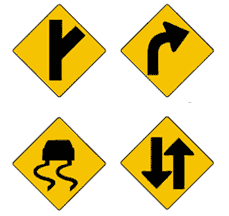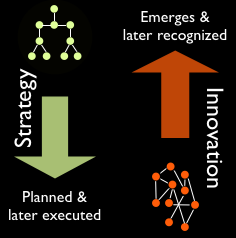
I’ve recently run across some stories involving Pixar, Apple and game design company Blizzard Entertainment that serve as great examples of courageous redirection.
What I mean by that phrase is an instance where a design team or company was courageous enough to change direction even after huge investment of time, money and vision.
Changing direction isn’t inherently beneficial, of course. And sometimes it goes awry. But these instances are pretty inspirational, because they resulted in awesomely successful user-experience products.
Work colleague Anne Gibson recently shared an article at work quoting Steve Jobs talking about Toy Story and the iPhone. While I realize we’re all getting tired of comparing ourselves to Apple and Pixar, it’s still worth a listen:
At Pixar when we were making Toy Story, there came a time when we were forced to admit that the story wasn’t great. It just wasn’t great. We stopped production for five months…. We paid them all to twiddle their thumbs while the team perfected the story into what became Toy Story. And if they hadn’t had the courage to stop, there would have never been a Toy Story the way it is, and there probably would have never been a Pixar.
(Odd how Jobs doesn’t mention John Lasseter, who I suspect was the driving force behind this particular redirection.)
Jobs goes on to explain how they never expected to run into one of those defining moments again, but that instead they tend to run into such a moment on every film at Pixar. They’ve gotten better at it, but “there always seems to come a moment where it’s just not working, and it’s so easy to fool yourself – to convince yourself that it is when you know in your heart that it isn’t.”
That’s a weird, sinking feeling, but it’s hard to catch. Any designer (or writer or other craftsperson) has these moments, where you know something is wrong, but even if you can put your finger on what it is, the momentum of the group and the work already done creates a kind of inertia that pushes you into compromise.
Design is always full of compromise, of course. Real life work has constraints. But sometimes there’s a particular decision that feels ultimately defining in some way, and you have to decide if you want to take the road less traveled.
Jobs continues with a similar situation involving the now-iconic iPhone:
We had a different enclosure design for this iPhone until way too close to the introduction to ever change it. And I came in one Monday morning, I said, ‘I just don’t love this. I can’t convince myself to fall in love with this. And this is the most important product we’ve ever done.’ And we pushed the reset button.
Rather than everyone on the team whining and complaining, they volunteered to put in extra time and effort to change the design while still staying on schedule.
Of course, this is Jobs talking — he’s a master promoter. I’m sure it wasn’t as utopian as he makes out. Plus, from everything we hear, he’s not a boss you want to whine or complain to. If a mid-level manager had come in one day saying “I’m not in love with this” I have to wonder how likely this turnaround would’ve been. Still, an impressive moment.
You might think it’s necessary to have a Steve Jobs around in order to achieve such redirection. But, it’s not.
Another of the most successful products on the planet is Blizzard’s World of Warcraft — the massively multiplayer universe with over 10 million subscribers and growing. This brand has an incredibly loyal following, much of that due to the way Blizzard interacts socially with the fans of their games (including the Starcraft and Diablo franchises).
Gaming news site IGN recently ran a thorough history of Warcraft, a franchise that started about fifteen years ago with an innovative real-time-strategy computer game, “Warcraft: Orcs & Humans.”
A few years after that release, Blizzard tried developing an adventure-style game using the Warcraft concept called Warcraft Adventures. From the article:
Originally slated to release in time for the 1997 holidays, Warcraft Adventures ran late, like so many other Blizzard projects. During its development, Lucas released Curse of Monkey Island – considered by many to be the pinnacle of classic 2D adventures – and announced Grim Fandango, their ambitious first step into 3D. Blizzard’s competition had no intention of waiting up. Their confidence waned as the project neared completion …
As E3 approached, they took a hard look at their product, but their confidence had already been shattered. Curse of Monkey Island’s perfectly executed hand-drawn animation trumped Warcraft Adventures before it was even in beta, and Grim Fandango looked to make it downright obsolete. Days before the show, they made the difficult decision to can the project altogether. It wasn’t that they weren’t proud of the game the work they had done, but the moment had simply passed, and their chance to wow their fans had gone. It would have been easier and more profitable to simply finish the game up, but their commitment was just that strong. If they didn’t think it was the best, it wouldn’t see the light of day.
Sounds like a total loss, right?
But here’s what they won: Blizzard is now known for providing only the best experiences. People who know the brand do not hesitate to drop $50-60 for a new title as soon as it’s available, reviews unseen.
In addition, the story and art development for Warcraft Adventures later became raw material for World of Warcraft.
I’m aware of some other stories like this, such as how Flickr came from a redirection away from making a computer game … what are some others?



